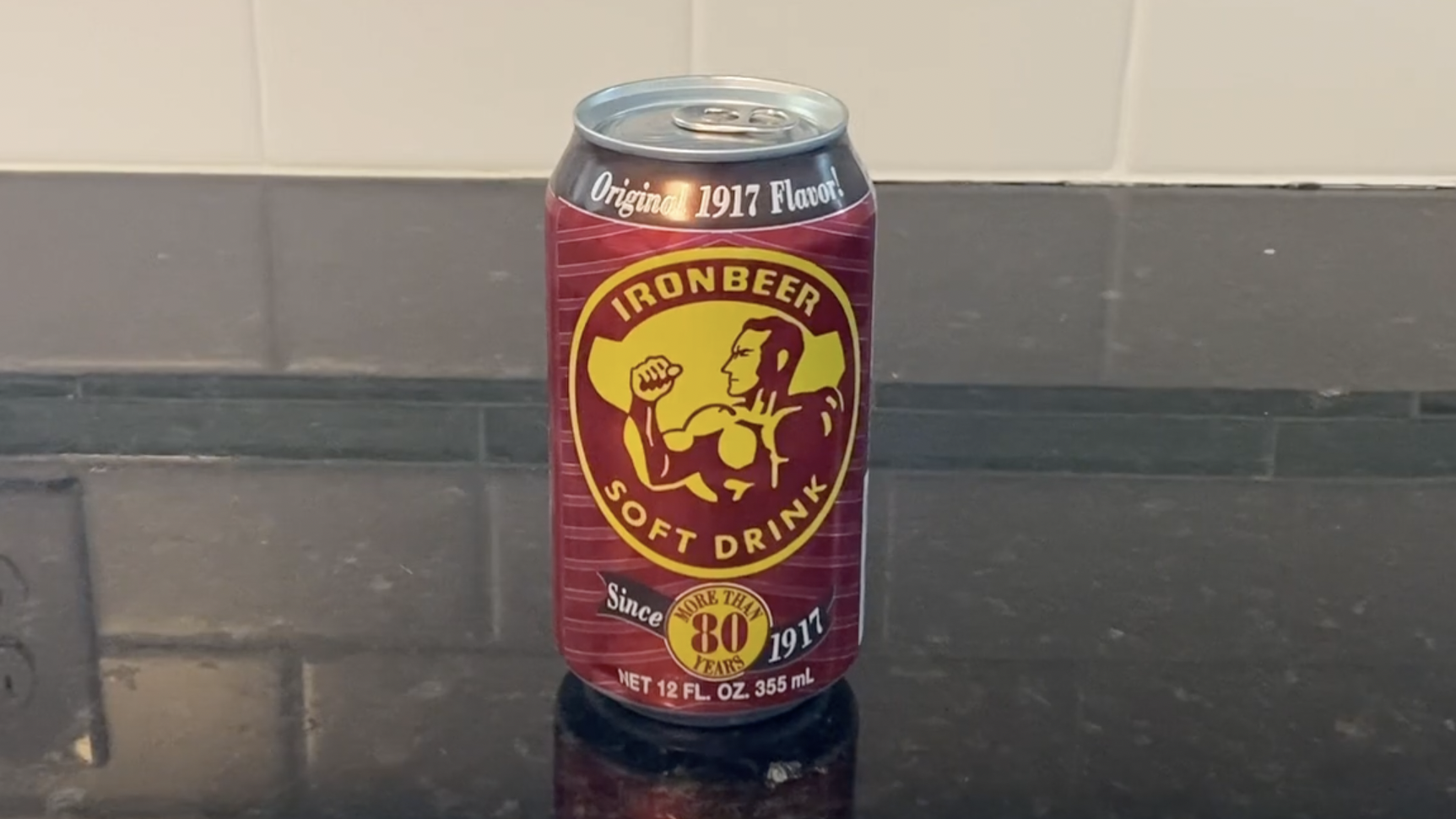Why You Need To Try Ironbeer
Try this Cuban soda—or one of its delicious alternatives—the next time you're at a Cuban restaurant.
We may receive a commission on purchases made from links.
It's always exciting when a restaurant offers soft drinks that aren't the stiff and conventional American brands we're all used to. Unfortunately, those restaurants are few and far between; most businesses are locked into their respective contracts with either Coca-Cola or Pepsi, peddling mainstream beverages for a bargain price. It's a shame, because sodas can help a restaurant stand out just as much as the food can.
Jarritos, for example, are a sight for sore eyes at taquerias and taco trucks, a tasty pairing for birria or al pastor. Italian delis often carry sweet and tangy A' Siciliana blood orange soda, which goes great with a traditional hoagie or muffuletta. Then there's birch beer, which, no matter what you're eating, is a must in Appalachia. Point is, deep-cut soft drinks rule, and they regularly outshine their name-brand counterparts. That's why the next time you sit down at a Cuban restaurant, you should try an Ironbeer.
What is Ironbeer?
Ironbeer (not to be confused with Ironport) is a soft drink that originated in Cuba in 1917, invented by Manuel Rabanal. The story goes that when Fidel Castro came into power in 1960 and nationalized all private property, it caused the Rabanal family to be exiled to Miami, where the soft drink company now resides. Often called Cuba's national beverage, Ironbeer also made a heavy mark on Florida, which has the largest concentration of Cuban Americans in the United States.
Ironbeer's peculiar name is backed up by packaging that makes it look even more like a lager. The red and yellow can features a silhouette of the brand's de facto mascot, a shirtless, absolutely yoked dude flexing. Big strong men drink Ironbeer, the can seems to say. It's sort of a spiritual companion to Red Horse, the Filipino beer that advertises its product with the tagline, "For men with real strength, inside and out!" I'll never not laugh at beverages marketing themselves to big strong men, as if mainlining 40 grams of sugar is what tones those lats.
The back of Ironbeer's label, though, tells a more gentle story:
Original 1917 flavor! On a Summer's afternoon, in 1917, a mule-drawn, wooden wagon arrived at a popular cafeteria in Havana, Cuba. It delivered the first four cases of a new soft drink that would soon be called The National Beverage. Even now, more than 80 years later, Ironbeer is still enjoyed for its refreshing flavor with just a hint of island spices. A lot can change in 80 years – but not the original flavor of Ironbeer!
Ah, yes. That original 1917 flavor we all seek out and crave. I've got to say, though, "hint of island spices" really sells it. Still, what does Ironbeer really taste like? Is it some imperceptible 1917 flavor, or a tropical island cola?
What does Ironbeer taste like?
The phrase you'll often hear associated with Ironbeer is that it tastes "like a fruity Dr. Pepper," and that's largely true. It's got that botanical bite to it that we expect from both root beer and Dr. Pepper. It's also got some birch-beer-esque zip to it, and the fruity notes are at once citrusy and floral—think oranges and plums.
It must also be said that Ironbeer contains a dump truck's worth of sugar. Each 12-oz. can contains 47 grams of sugar; I don't know about you, but I just said "God damn!" sitting alone in my kitchen. For comparison, a 12-oz. can of Coca-Cola contains 39 grams of sugar. Dr. Pepper, 38 grams. Root beers tend to carry 43-44 grams of sugar, and Ironbeer is more on par with the sugar content of Dad's or A&W brand root beer. Ironbeer, however, has way more flavor than both of those products.
This Cuban soda is a worthy accompaniment to lechon, arroz con pollo, a medianoche, or a classic Cuban sandwich. As a rule, fruity, sugary drinks always pair great with fatty, garlicky, citrusy food. But is Ironbeer the soda of choice for Cuban Americans? Or is it kind of a tourist trap?
Other great Cuban sodas you should try
I spoke to Cuban American chef and restaurateur Olivia Bin, who confirmed that Ironbeer isn't as ubiquitous as I'd thought.
"It is often in Cuban restaurants and spots in Miami, but it's not as popular as many food people like to believe," Bin said.
I'll be honest: When I told her I was writing about Ironbeer, I could tell she wasn't all that enthused. I get the sense that Ironbeer is the most well-known and talked about Cuban soda, but not necessarily the one that lives in the hearts of many Cubans.
Bin proceeded to tell me about Materva, a soda made from yerba mate (this soda contains 40 grams of sugar). I tasted it, and it's deliciously sweet—think of it like a creamy tea-flavored pop.
"We drink it in the same context as Coke," Bin said. There's also Jupina, a tropical pineapple soda originating in Cuba.
Cuba has made strong contributions to the soft drink landscape, and many of these sodas can be found in various areas of the United States. In addition to being readily available online, you'll regularly see these sodas at Cuban restaurants and other Latin American establishments as well. Sometimes you just get sick of Coke and Pepsi, and in those moments there are flavorful alternatives worth seeking out with enthusiasm.
